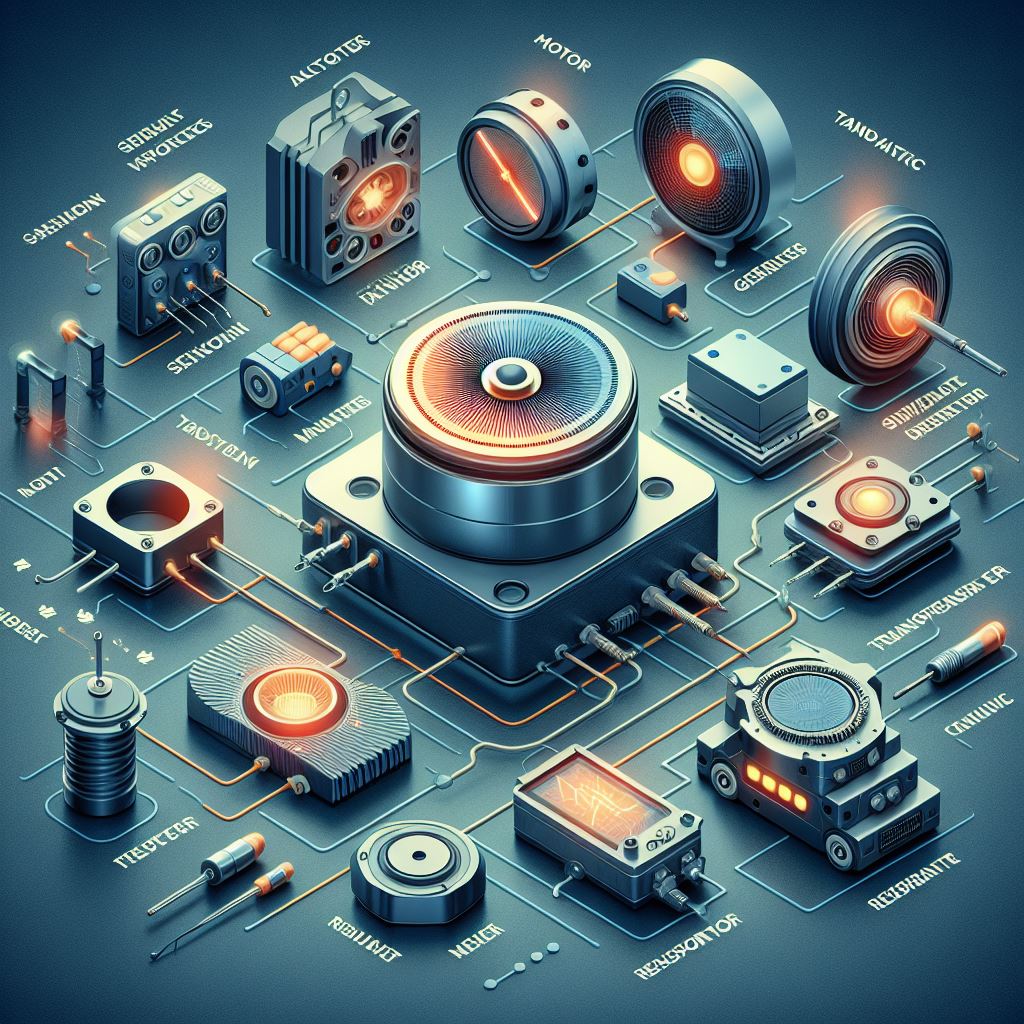The piezoelectric devices market size is experiencing significant growth, driven by advancements in materials, miniaturization, and integration with emerging technologies. These devices, which convert mechanical energy into electrical energy and vice versa, are pivotal in various applications, including sensors, actuators, and energy harvesting systems. This article explores the key technological trends influencing the piezoelectric devices market.
Advancements in Piezoelectric Materials
Lead-Free Alternatives: Traditional piezoelectric materials like lead zirconate titanate (PZT) have raised environmental concerns due to their lead content. In response, researchers are developing lead-free piezoelectric materials such as barium titanate (BaTiO₃) and sodium potassium niobate (KNN). These materials offer comparable performance without the environmental and health risks associated with lead .
Flexible and Organic Materials: The demand for wearable and flexible electronics has spurred the development of organic piezoelectric materials. These materials can be integrated into textiles and other flexible substrates, enabling applications in smart clothing and wearable health monitors .
Nanostructured Materials: Nanotechnology is being employed to enhance the performance of piezoelectric materials. Nanostructured materials, such as nanowires and nanotubes, increase the surface area available for energy conversion, leading to more efficient devices .
Integration with Emerging Technologies
Internet of Things (IoT): Piezoelectric devices are increasingly used in IoT applications for energy harvesting and sensing. Their ability to convert ambient mechanical energy into electrical energy makes them suitable for powering small, low-energy devices without the need for batteries .
Artificial Intelligence (AI) and Machine Learning: The integration of piezoelectric sensors with AI algorithms allows for real-time data analysis and decision-making. This combination is particularly useful in predictive maintenance and smart manufacturing applications .
Smart Cities: In smart city initiatives, piezoelectric devices are employed for infrastructure monitoring, traffic management, and environmental sensing. Their ability to operate autonomously and generate their own power makes them ideal for deployment in urban environments .
Download PDF Brochure @ https://www.marketsandmarkets.com/pdfdownloadNew.asp?id=256019882

Miniaturization and MEMS Technology
Micro-electromechanical systems (MEMS) technology has enabled the miniaturization of piezoelectric devices, allowing them to be integrated into compact and portable applications. MEMS-based piezoelectric devices are used in a variety of consumer electronics, including smartphones, wearables, and medical devices .
Energy Harvesting Applications
Piezoelectric devices are increasingly being used for energy harvesting in various applications:
Wearable Devices: Piezoelectric generators in wearable devices convert mechanical energy from body movements into electrical energy, powering sensors and other components .
Industrial Applications: In industrial settings, piezoelectric devices are used to harvest energy from vibrations in machinery, providing a sustainable power source for sensors and monitoring systems .
Environmental Monitoring: Piezoelectric devices are deployed in remote locations for environmental monitoring, where they harvest energy from wind or water flow to power sensors without the need for external power sources .
High-Temperature Applications
Innovations in piezoelectric materials have led to the development of devices that can operate in high-temperature environments. High-temperature piezoelectric devices are used in automotive and aerospace applications, where they monitor conditions such as pressure and vibration in engines and other components .
Challenges and Future Directions
Despite the advancements, several challenges remain in the piezoelectric devices market:
Material Limitations: While lead-free and flexible materials show promise, achieving the same performance levels as traditional materials like PZT remains a challenge .
Manufacturing Costs: The production of advanced piezoelectric materials and devices can be costly, which may hinder widespread adoption .
Integration with Existing Systems: Integrating new piezoelectric technologies into existing infrastructure and systems requires careful design and consideration of compatibility .
Looking ahead, ongoing research and development efforts are focused on overcoming these challenges. Future trends in the piezoelectric devices market include:
Development of High-Performance Materials: Continued research into new materials that offer enhanced performance and sustainability is expected to drive innovation in the market.
Advancements in Manufacturing Techniques: Improvements in manufacturing processes, such as additive manufacturing and precision fabrication, will enable the production of complex piezoelectric structures at lower costs.
Expansion into New Applications: As technology advances, piezoelectric devices are likely to find new applications in areas such as robotics, healthcare, and renewable energy.
The piezoelectric devices market is evolving rapidly, driven by technological advancements in materials, integration with emerging technologies, and miniaturization. While challenges remain, ongoing research and development efforts are paving the way for more efficient, sustainable, and versatile piezoelectric devices. As these technologies continue to mature, they are poised to play a crucial role in the development of smart, connected, and energy-efficient systems across various industries.
About MarketsandMarkets™
MarketsandMarkets™ has been recognized as one of America’s Best Management Consulting Firms by Forbes, as per their recent report.
MarketsandMarkets™ is a blue ocean alternative in growth consulting and program management, leveraging a man-machine offering to drive supernormal growth for progressive organizations in the B2B space. With the widest lens on emerging technologies, we are proficient in co-creating supernormal growth for clients across the globe.
Today, 80% of Fortune 2000 companies rely on MarketsandMarkets, and 90 of the top 100 companies in each sector trust us to accelerate their revenue growth. With a global clientele of over 13,000 organizations, we help businesses thrive in a disruptive ecosystem.
The B2B economy is witnessing the emergence of $25 trillion in new revenue streams that are replacing existing ones within this decade. We work with clients on growth programs, helping them monetize this $25 trillion opportunity through our service lines – TAM Expansion, Go-to-Market (GTM) Strategy to Execution, Market Share Gain, Account Enablement, and Thought Leadership Marketing.
Built on the ‘GIVE Growth’ principle, we collaborate with several Forbes Global 2000 B2B companies to keep them future-ready. Our insights and strategies are powered by industry experts, cutting-edge AI, and our Market Intelligence Cloud, KnowledgeStore™, which integrates research and provides ecosystem-wide visibility into revenue shifts.
To find out more, visit www.MarketsandMarkets™.com or follow us on Twitter , LinkedIn and Facebook .
Contact:
Mr. Rohan Salgarkar
MarketsandMarkets™ INC.
1615 South Congress Ave.
Suite 103, Delray Beach, FL 33445
USA: +1-888-600-6441
Visit Our Website: https://www.marketsandmarkets.com/